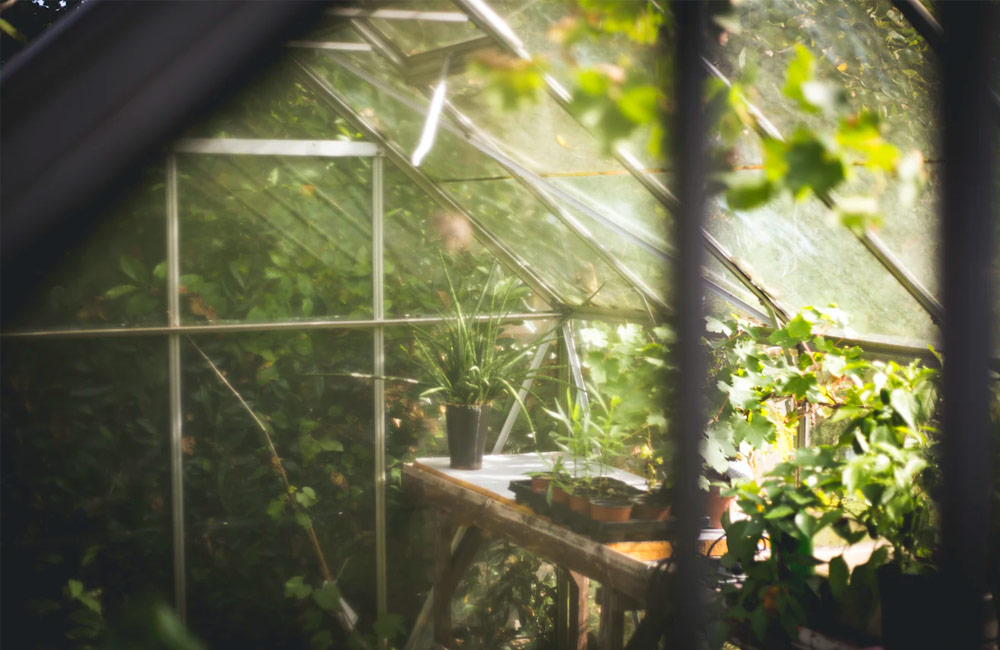Heating Greenhouse without Electricity

Paying for heating a greenhouse can be a bit scary for people. Luckily, with a little bit of knowledge and a little bit of work, it is possible to make your greenhouse warm without using any electricity! It may not be quite as warm as a fully heated greenhouse but it will keep your plants from freezing and it will be free!
The key to heating a greenhouse without power is to take full advantage of the sun. If you are clever in the design of your greenhouse you can easily take advantage of the sun’s free energy and heat even on cloudy days. Here are seven ways you can keep your greenhouse warm without spending a penny on electricity.
Use Compost for Heat
Even on cold days a compost heap with heat up. Compost is undeniably good for the environment and good for your wallet. A well-designed compost pile can get over 100 degrees Fahrenheit and that heat can help to naturally heat up your greenhouse. Remember to turn your compost pile regularly in order to add oxygen. Another hot tip is to make your paths from dark wood mulch.
Thermal Mass
Heating your greenhouse with heat from the sun is much more effective with the addition of thermal mass. There are several things that will absorb heat during the day and then release the heat in the evening. Rocks, clay, bricks, and water all have good thermal mass. Make your garden beds raised with stone or brick walls. This will help absorb the heat. Many people take advantage of the thermal mass of water by putting several rain barrels full of water in their greenhouses. The water will absorb the sun's heat during the day and release it as it gets colder out.
Add Extra Windows/Panes
Double pane windows are much more energy-efficient and in extremely cold places all of the homes must have double-pane glass on the windows to help prevent heat loss. It is out of most people’s budgets to use double pane windows in their greenhouses but it wouldn’t hurt to add a layer of plastic to produce a double-pane effect. Adding caulking can help hold in the heat as well.
Add Extra Insulation to the North Side
Pay attention to the orientation of your greenhouse, if you live in the Northern Hemisphere there is little reason for having glass panels on the northern side of your greenhouse since the sun doesn’t shine there. Insulating the northern side of your greenhouse will keep it much warmer by preventing heat loss and stopping the cold winds. You could also put some water barrels against that wall to increase the thermal mass heating capacity.
Reflect South Facing Light Back Inside
Consider painting the south-facing interior wall of your greenhouse white or cover it in reflective material. This will allow the sun’s rays to reflect off this wall providing the plants with more heat during the daytime.
Sunken Foundations
One way to moderate the temperature in your greenhouse is to sink the floor of the greenhouse. When the temperatures are cold outside it is warmer to be underground in the insulation of the earth than above ground. If your greenhouse floor is sunk into the earth a little way, the warmth of the earth will help to heat your greenhouse.
Solar Water Heating Pipes
If you are serious about heating your greenhouse it is a good idea to consider installing some solar water heating pipes. These pipes can be heated even more if they are coiled into the compost heap in your greenhouse. The warmth from the sun and the compost heap will heat the water. The heated water will be pumped through the closed circuit and heat the soil in your garden beds. This option may cost a bit to get going but it will save you money in the long run.
you can shop all greenhouses accessories on our site here.
 Author:
Author: